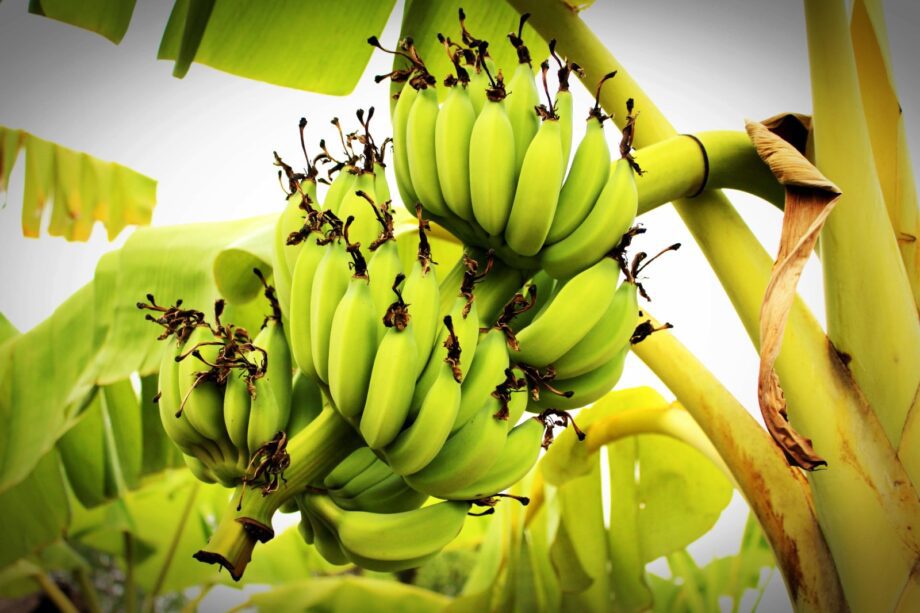Bananas are a delicious fruit that can be enjoyed in many ways, but did you know that they can also be grown in your very own garden? With just a little bit of care and attention, you can have fresh bananas to enjoy all year round! Here’s everything you need to know about planting bananas in your garden.
What are the benefits of growing Bananas in your home garden?
There are many benefits to growing Bananas in your home garden. They are a beautiful addition to any landscape and can provide you with fresh, delicious fruit. Bananas are also relatively easy to care for and can be a fun project for the whole family.
Bananas are a great source of vitamins and minerals, including potassium, vitamin C, and dietary fiber that is best for your health. They can help boost your immune system, improve digestive health, and even aid in weight loss.
Not only are Bananas a nutritious snack, but they can also be used in a variety of recipes. From smoothies to pies, there are endless possibilities when it comes to cooking with Bananas. Fresh Bananas also make a great gift for friends and neighbors.
If you live in a warm climate, then growing Bananas in your garden is a great way to have fresh fruit all year round. Bananas are versatile fruit that can be enjoyed in many different ways. So why not give them a try in your own home garden?
What is the best time of the year to grow Bananas in your garden?
There are a few things to consider when deciding the best time of year to grow bananas in your garden. The climate in your area, the amount of space you have, and your personal preferences will all play a role in determining when is the best time for you to grow bananas.
If you live in an area with a warm climate, you can plant bananas at any time of year. If you have a lot of space, you may want to plant them in the spring, so they have plenty of time to grow before the summer heat sets in. If you have a smaller space, or if you prefer, you can plant them in the fall, and they will be ready to harvest in the winter.
No matter what time of year you choose to plant bananas, make sure you give them plenty of room to grow. They will need at least 8 feet of space between each plant, so plan accordingly. Also, make sure you water them regularly and fertilize them every few weeks to ensure they have everything they need to thrive.
Criteria required to create an ideal environment for Bananas?
When it comes to planting bananas, there are a few key things to keep in mind in order to create an ideal environment. First, bananas need full sun in order to produce fruit, so make sure to choose a spot in your garden that gets plenty of sunlight. Bananas also prefer warm weather and will not do well in cooler climates. If you live in an area with a colder climate, you can still grow bananas by keeping them in pots and bringing them indoors during the winter months.
Another important factor to consider when growing bananas is soil type. Bananas prefer loose, well-draining soil that is high in organic matter. If your soil is heavy or clay-like, you can improve it by adding compost or other organic matter. Once you have chosen the perfect spot and prepared the soil, it’s time to plant!
When planting bananas, be sure to space them at least 10 feet apart. This will give them room to grow and spread out in the soil. You can either start with small banana plants or larger ones that are already bearing fruit. If you start with small plants, it will take a few years before they produce fruit.
Once your bananas are planted, water them well and fertilize them monthly with organic insecticides to help them grow well.
How can you grow Bananas in your garden?
Many people don’t realize that you can grow Bananas in your own garden. Bananas are a great addition to any fruit or vegetable garden, and they’re surprisingly easy to care for. With a little bit of planning, you can have a thriving Banana plant in no time.
Here are a few tips for growing Bananas in your garden:
1. Choose the right location. Bananas need full sun and well-drained soil. If you live in an area with cold winters, it’s best to grow bananas in pots so you can move them indoors when the weather gets chilly.
2. Plant your Banana tree. You can buy Banana trees at most nurseries or online. Once you’ve got your tree, dig a hole that’s twice as wide as the tree’s root ball and just as deep. Backfill with soil and water well.
3. Fertilize regularly. Bananas are heavy feeders, so they’ll need plenty of fertilizer to stay healthy. Add compost or manure to the soil around your Banana tree every few months, and use a balanced fertilizer according to package directions.
How to use insecticides to prevent pest attacks?
Bananas are delicious and nutritious fruit that can be enjoyed fresh or cooked. Planting bananas in your garden is a great way to have a steady supply of this tasty treat. However, bananas are also a favorite food of many pests. To prevent your banana plants from being destroyed by pests, you will need to use insecticides.
You will need to choose an insecticide that is specifically designed to kill the type of pests that are attacking your banana plants. Be sure to follow the instructions on the label when using any type of pesticide. You can even use organic insecticides like Tron pyrethrum which can help to prevent pest attacks without harming the crop or plant.
Insecticides can be applied as a spray or as a soil drench. For best results, you should apply the insecticide to your banana plants at the first sign of pest activity. This will help to prevent further damage to your plants.
Conclusion
Bananas are a great addition to any garden, and with a little care and attention, they can thrive. By following the tips in this article, you can plant bananas in your garden and enjoy their sweet flavor for years to come. Thanks for reading and happy gardening!

